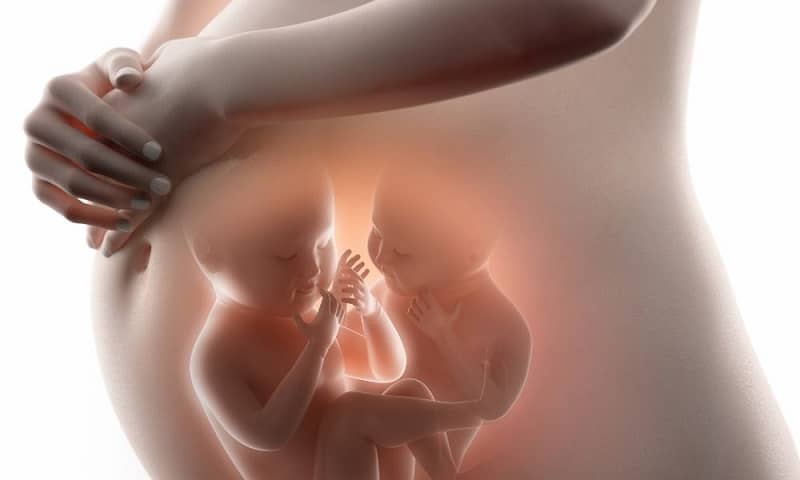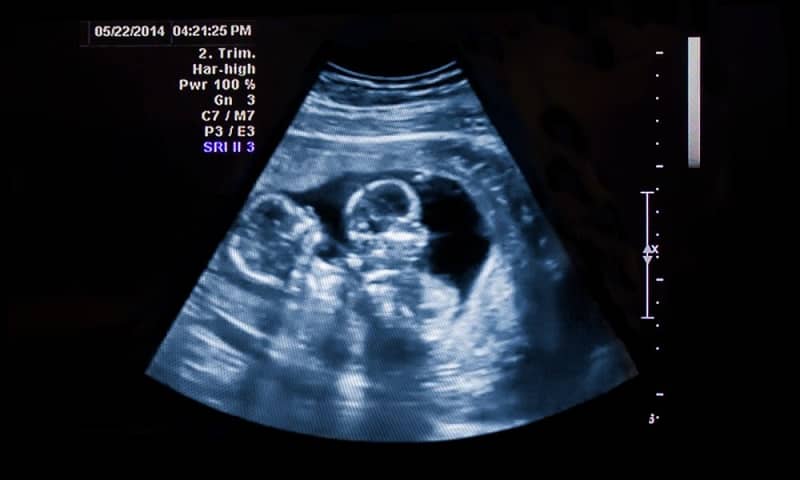


27 Sep Identical and Non Identical/Fraternal Twins: 6 Key Differences
Different pregnancies need different types of care and medical help. Thus, being aware of the type of your pregnancy, whether single or with twins, becomes essential.
Though it’s not tough to differentiate between a twin pregnancy and a single fetus pregnancy, it gets tricky to check for the differences between identical and non-identical twins.
The basic difference between them is, of course, the entire reproductive process till the time of pregnancy.
Yet, the process itself branches out to give many other differences between these pregnancies.
But before we talk about these key differences, let’s understand the basis of the differentiation.
Reproductive Differences – How are Identical and Non-Identical Twins Formed?


According to reports, the chances of twin pregnancies are higher than in other type of pregnancies.
Every 1 out of 80 pregnancies is a twin pregnancy, either identical or non-identical.
If we look at the stats, two-thirds of these pregnancies are non-identical pregnancies, and one-third identical.
While both pregnancies actually result in twins, there are major differences in the children born because of their unique reproductive formation.
How are Identical Twins Formed?
Generally, the reproductive process among women starts with the ovaries releasing a single ovum which is further fertilized by the sperm entering the body through coitus.
In terms of identical twin pregnancies, the process remains normal with the sperm fertilizing the single egg.
Post fertilization, a zygote is formed, which divides into two with each of the two zygotes getting the same genetic composition.
Hence, when the divided zygotes grow and develop, they ultimately result in identical twins having the same genetic composition with the same physical features:
- Sex
- Eye color
- Hair type and color
- Height and weight
Though there are many cases of identical twin pregnancies around the globe, there is not one specific cause that could lead to the division of zygotes.
As opposed to identical twins, the latter has a different formation process.
How are Non-Identical Twins Formed?
Non-identical twins or fraternal twins seem like two different people developing and maturing at the same time.
Unlike identical twins, they are formed because of the simultaneous release of two eggs by the mother which two different sperms fertilize at the same time.
Since the sperm might carry different genetic compositions and only share 50% of the coding, the zygotes develop into twins that are not identical.
While there isn’t any specific indication of identical twins, non-identical twins can be because of hyperovulation.
Hyperovulation is because of hormonal imbalance among women. Normally hormones signal the release of one egg, but when it sends abnormal signals, the ovaries can yield two or more eggs.
Some of the factors affecting ovulation include:
Too much usage of birth pills before planning a pregnancy – Birth pills can create hormonal imbalance in your body leading to hyperinflation or anovulation.
- Fertility drugs – Women often use fertility drugs hoping to achieve faster fertility, but that causes hormonal imbalance. While it can create a fraternal twin pregnancy, it could also affect your fertility negatively.
- Genetics – Some women see genetic mutation because of which a woman might hyper ovulate and have fraternal twins.
- Maternal age – The older the woman, the higher the chances of fraternal twin pregnancy as there could be hyperovulation, a few months before menopause.
- Diet – In areas where the diet includes lots of plants containing phytoestrogens, there is a higher rate of fraternal twin pregnancies. Phytoestrogens mimic the activity of estrogen in women’s body and can cause hyperovulation.
Based on the process of formation of both identical and non-identical twins, they show some key differences that medical diagnostics can read.
Identical vs Non Identical twins – 6 Major Differences



Following listed are some of the main differences between identical and non identical twins.
#1. Gender of the Twins
The chromosomal identification of babies is XX for females and XY for males. The X factor comes from the mother, while the father can either pass on an X or a Y.
When a single egg is fertilized by a single sperm, the zygote formed can only have one X from the mother and one X or Y from the father.
Thus, even on the division of zygote, the chromosomal identification remains the same.
This causes the children to be of the same gender in identical twin pregnancies.
But in the case of non-identical twins, two eggs are being fertilized by two different sperms, hence the gender is generally different.
#2. Blood Type
Blood type can be a determining factor for zygosity as there are different blood groups determined by the DNA.
Since identical twins have got a single chromosomal identification divided into two zygotes, they generally have the same blood type.
But in terms of non-identical twins, the blood group can be the same or different, depending on the sperm that fertilize the eggs.
#3. Number of Placentas
The placental difference between identical and non identical twins can either be checked with the help of ultrasound or post-birth.
Generally, a single placenta is shared between identical twins. But non-identical twins can either have two different placentae, or a placenta that shows fusion.
Dizygotic (fraternal) twins always have their separate placenta, but monozygotic (identical) twins may show mutual or separate placenta too.
#4. Prenatal Diseases
Certain pregnancy diseases too can be indicative of non-identical and identical twins.
For example, twin-to-twin transfusion syndrome (unequal supply of blood to twins) affects only identical twins in the womb because they share the same placenta and hence the same blood circulation.
#5. Difference between Identical and Fraternal Twins Psychology
According to reports, personality, to some extent, is an inherited trait. Studies done on personalities of identical and non-identical twins suggest that even after being reared apart, identical twins show more similar personality traits as compared to non-identical twins.
However, since personality is easily influenced by the environment surrounding them, it is generally not considered a vital difference between identical and fraternal twins.
It’s worth noting that different types of personality disorders are influenced by genetic factors differently. The heritability of attitudes among twins has also been studies in a research published in the Journal of Personality and Social Psychology.
#6. Physical Features
As the name suggests, identical twins show similar features from height, eyes, to even weight. On the other hand, non-identical twins generally show different physical characteristics.
However, physical characteristics aren’t always conclusive of zygosity as identical twins too can have key differences.
What Differences can Identical Twins Have?
Identical twins, although they share the same DNA, sometimes can have changes in how they appear because of the environment they develop in.
This could change not only the way their DNA is expressed but is also responsible for the slight difference in their fingerprints.
Do Identical Twins Have 100% the Same DNA?
Identical twins have the same genetic composition during fertilization, implantation, and nurturing, but that doesn’t mean they look 100% the same post-birth.
While they do remain genetically the same, there could be changes in how these genes are expressed in them post their birth.
The changes are because of the environment in the womb they are developing in.
For example, while sharing the same placenta, one of the twins can derive more nutrition and gain more circulation than the other.
This could cause more dominant expression of the genes than the other twin. This is the reason why you will find slight height and weight differences among identical twins.
Do Identical Twins Share Fingerprints?
The environmental factors in the womb also have an impact on the expression of the DNA responsible for fingerprints.
Hence, identical twins generally don’t have the same fingerprints.
While they might appear similar to you, when it comes to forensics and artificial intelligence like touch sensors of phones, they can easily make out the difference.
Thus, looking for physical differences between identical and non-identical twins isn’t a reliable way to find differentiating factors.
The only best way of identifying them is through specific testing procedures.
How to Tell If Twins are Identical Or Non-Identical?



Many tests can identify identical and non-identical twins based on genetic composition and other characteristics of pregnancy.
Here are some of the most helpful medical ways for reliable investigations:
#1. Ultrasound Scan
A scheduled ultrasound scan between 10 to 14 weeks of pregnancy helps identify if the twins are identical or fraternal.
An ultrasound helps in the identification by checking on the membranes around the babies within the womb:
- Inner membrane – forms a bag filled with the amniotic fluid
- Outer membrane – a layer around the inner membrane to help in the formation of the placenta
The twins are categorized in the following based on the placenta and the membranes:
Monochorionic Diamniotic Twins
- The babies share one placenta
- Mutual outer membrane or amnion
- Separate inner membrane
Monochorionic Monoamniotic Twins
- Mutual placenta
- Common outer membrane
- Mutual inner membrane
Dichorionic Diamniotic Twins
- Separate placenta
- Have separate outer membrane
- Separate inner membrane
The analysis can be done based on the results of the test.
How to Tell If Twins are Identical or Fraternal from Ultrasound?
In cases of results of Monochorionic Monoamniotic, and Monochorionic Diamniotic, there are high chances of identical twins pregnancy.
But in the case of Dichorionic Diamniotic results, the twins are mostly fraternal/non-identical.
#2. Zygosity Testing
Cells are collected from the mouth of each twin and total of 23 DNA are tested from the samples. DNA profiles are then obtained.
These DNA profiles show if the twins are identical or non-identical.
Based on Zygosity Tests:
If the DNA profiles of both the kids match, then they are identical twins. But if the DNA profiles are different, they are categorized as fraternal twins.
What’s the Final Word?
It’s not easy to find differences between Identical and non-identical twins during pregnancy if tests are not done.
Generally, these tests are performed to study the zygosity of the fetus to help in planning a treatment for best results.
It’s worth noting that apart from the two types of pregnancies we discussed, there are also some other unique types of twins.
For example, there have also been reports of mirror twins and parasitic twins.
While most twins can generally be differentiated based on their physical appearance, parasitic twins are not able to make it in most cases.
So, hopefully, this has helped you understand at least some science behind identical and non-identical twins. If you’ve any more questions, do leave them in the comments section down below.
READ NEXT: How Estrogen Hormone Helps in Pregnancy



No Comments